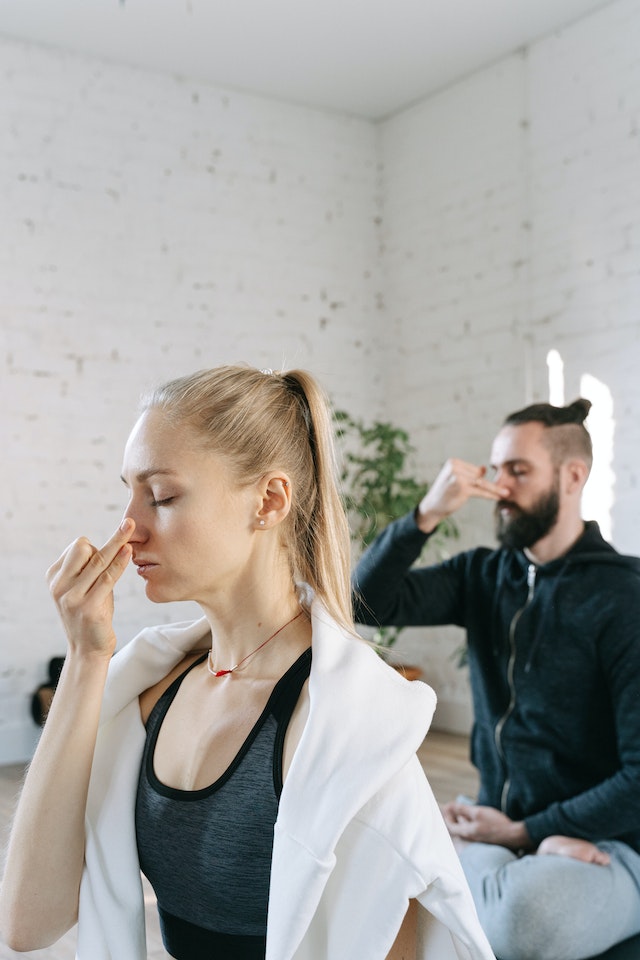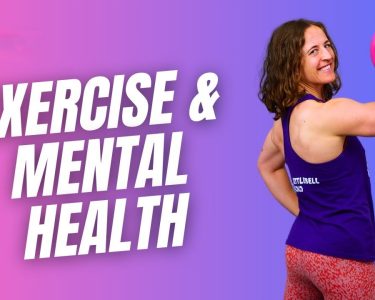Introduction: In our fast-paced and often stressful lives, finding effective ways to manage and reduce stress is crucial for our well-being. One powerful and accessible tool we all possess is our breath. By practicing simple breathing exercises, we can tap into the innate relaxation response of our bodies, promoting calmness and reducing stress. In this article, we will explore seven easy breathing exercises that you can incorporate into your daily routine for stress relief. Take a deep breath, let go of tension, and embark on a journey towards a more tranquil mind and body.
- Deep Belly Breathing: Deep belly breathing, also known as diaphragmatic breathing, is a foundational technique for stress relief. It promotes relaxation, reduces anxiety, and restores a sense of calm. Follow these steps to practice deep belly breathing:
- Find a comfortable seated position or lie down.
- Place one hand on your chest and the other on your abdomen.
- Inhale slowly through your nose, allowing your abdomen to rise as you fill your lungs with air.
- Exhale through your mouth, gently contracting your abdominal muscles to release the air.
- Focus on the sensation of your breath moving in and out, and the rise and fall of your abdomen.
Practicing deep belly breathing for a few minutes each day can help alleviate stress and bring about a sense of tranquility.
- 4-7-8 Breathing: The 4-7-8 breathing technique is a simple and effective exercise for stress relief. It helps slow down your heart rate, calm your mind, and induce a state of relaxation. Follow these steps to practice 4-7-8 breathing:
- Sit or lie down comfortably.
- Take a deep breath through your nose to a count of four.
- Hold your breath for a count of seven.
- Exhale slowly through your mouth to a count of eight.
- Repeat this cycle three more times, for a total of four breaths.
By focusing on the extended exhale, 4-7-8 breathing activates the body’s relaxation response, reducing stress and promoting a sense of well-being.
- Box Breathing: Box breathing, also known as square breathing, is a technique that brings balance and calmness to the mind and body. It helps regulate your breath and alleviates stress. Follow these steps to practice box breathing:
- Find a comfortable position and relax your body.
- Inhale slowly through your nose to a count of four, filling your lungs with air.
- Hold your breath for a count of four.
- Exhale slowly through your mouth to a count of four, emptying your lungs completely.
- Hold your breath again for a count of four before starting the next inhale.
Box breathing provides a structured and rhythmic pattern of breath, helping you find a sense of peace and equilibrium.
- Progressive Muscle Relaxation with Breath: Progressive muscle relaxation combined with breath awareness is a technique that releases tension from the body and calms the mind. Follow these steps to practice progressive muscle relaxation:
- Find a quiet and comfortable space.
- Close your eyes and take a few deep breaths to relax.
- Starting from your toes, gradually tense the muscles in your feet and then release the tension as you exhale.
- Continue moving upward, tensing and releasing each muscle group as you exhale, including your calves, thighs, abdomen, hands, arms, shoulders, and facial muscles.
- With each exhale, let go of any remaining tension in your body and breathe deeply.
Progressive muscle relaxation with breath helps you become more aware of tension and allows you to release it, promoting relaxation and stress relief.
- Guided Visualization and Breath: Guided visualization combined with breathwork is a powerful technique for reducing stress and fostering a sense of calm. Follow these steps to practice guided visualization and breath:
- Find a comfortable position and close your eyes.
- Take a few deep breaths to relax your body and mind.
- Imagine yourself in a peaceful and serene place, such as a beautiful beach or a tranquil garden.
- As you inhale, imagine breathing in the soothing and calming energy of this place.
- As you exhale, imagine releasing any stress, tension, or negative thoughts.
- Continue breathing deeply and visualizing this peaceful place, allowing yourself to relax and let go.
Guided visualization and breathwork create a calming mental imagery that helps reduce stress and promote a sense of tranquility.
- Pursed Lip Breathing: Pursed lip breathing is a simple technique that can be done anytime, anywhere, to alleviate stress and anxiety. It helps regulate your breath, slow down your heart rate, and promote a state of relaxation. Follow these steps to practice pursed lip breathing:
- Relax your body and find a comfortable position.
- Inhale slowly through your nose for a count of two.
- Purse your lips as if you were about to blow out a candle.
- Exhale gently through your pursed lips for a count of four.
- Continue this pattern of inhaling through your nose and exhaling through pursed lips.
Pursed lip breathing is a quick and effective way to calm your nervous system and reduce stress in the moment.
- Breath Awareness Meditation: Breath awareness meditation is a practice that cultivates mindfulness and reduces stress by focusing your attention on the breath. Follow these steps to practice breath awareness meditation:
- Find a quiet and comfortable space.
- Sit in a relaxed posture, with your spine straight and your shoulders relaxed.
- Close your eyes and bring your attention to your breath.
- Notice the sensation of the breath as it enters and leaves your body.
- Whenever your mind wanders, gently bring your attention back to the breath without judgment.
- Continue observing your breath for a few minutes, allowing yourself to be fully present in the moment.
Breath awareness meditation helps calm the mind, increase self-awareness, and reduce stress by anchoring your attention to the present moment.
Conclusion: These easy breathing exercises are powerful tools for managing stress and promoting a sense of calm in our busy lives. By incorporating them into your daily routine, you can create moments of relaxation, restore balance to your body and mind, and cultivate a greater sense of well-being. Remember to practice these exercises regularly, allowing yourself the gift of conscious and intentional breathing. Take a deep breath, let go of stress, and embrace the transformative power of your breath to find peace and serenity.




